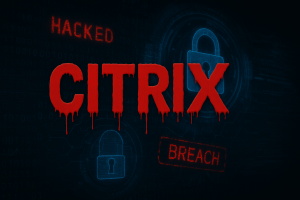Oracle has acknowledged a breach impacting over 6 million credentials on its legacy cloud systems. Xcitium unpacks the timeline, legal fallout, and security lessons.

Oracle’s Legacy Cloud Breach: What Happened and Why It Matters
In early April 2025, Oracle, one of the world’s leading cloud service providers, quietly acknowledged a breach of more than 6 million user credentials in its legacy cloud (Gen 1/Classic) environment. The acknowledgment came after a class-action lawsuit accused Oracle of trying to cover up the breach initially, putting tenants in cloud environments at greater risk. The episode highlights valuable lessons in legacy infrastructure management, breach notification, and trust establishment in the cloud. Here, Xcitium breaks down the breach timeline, legal and technical ramifications, and offers actionable guidance for both business leaders and security practitioners.
Timeline & Technical Anatomy of the Breach
How the Intrusion Unfolded
Compromise point: Threat actor “rose87168” exploited a publicly known Java vulnerability (CVE‑2021‑35587) in Oracle Fusion Middleware/OpenSSO last utilized around 2017 on Gen 1 servers.
Attack vector: Used a web shell and malware to exfiltrate data from Oracle Identity Manager beginning January 2025, undiscovered until late February.
Exfiltrated data: Included usernames, hashed passwords, email addresses, SSO/LDAP credentials, Java KeyStore files, and JPS keys—affecting ~140,000 tenant databases.
Breach Discovery & Public Disclosure
Publicly available data samples, estimated at around 6 million records, began circulating on BreachForums around March 20. Oracle quietly notified some affected customers and involved federal authorities, but initially downplayed the incident by referring to it as an issue with “legacy” and unused systems.

The Legal Reckoning: Lawsuit Accuses Oracle of Concealment
Nature of the Class‑Action Suit
Filed March 31 in Texas, plaintiff Michael Toikach accuses Oracle of:
- Failing to secure sensitive credentials
- Breaking Texas notice laws by taking more than 60 days to notify
- Cutting corners on fundamental security practices, such as MFA or network segmentation
Legal & Regulatory Aspects
Texas has a stringent 60-day breach notice law that Oracle is accused of violating. The other claims involve negligence, violation of fiduciary duty, and demanding damages along with structural security reforms.
Broad Industry & Security Implications
Cloud Environment Trust Erosion
Specialists warn this breach tears at the very fabric of cloud security at its core—strong tenant isolation. A breached SSO endpoint is a “watering‑hole,” beckoning threat actor attention to all users.
Legacy Systems—A Lasting Danger
Oracle’s journey illustrates that legacy infrastructure, if not patched, can become the enterprise defense’s greatest weakness. Cloud migration alone is insufficient—legacy environments have to be decommissioned or isolated.

Learnings & Recommendations for CISOs
1. Decommission and Audit Legacy Infrastructure
Retired or legacy systems—even if utilized sporadically—must be completely eliminated or stringently isolated. Retirement of legacy services is necessary to reduce attack surfaces.
2. Enable Proactive Vulnerability Management
Current vulnerabilities, like CVE‑2021‑35587, must be remediated promptly. Implement strict patch-management programs and run periodic security audits.
3. Enhance Detection & Response
Enable real‑time anomaly detection for SSO/LDAP access. Logs and SIEM should alert on anomalous login patterns or credential reuse immediately.
4. Require Robust Authentication Practices
Implement multi‑factor authentication (MFA) and frequent credential rotation on admin systems and SSO accounts. This can significantly reduce credential-based compromises.
5. Enhance Incident Transparency
Delayed disclosure erodes stakeholder trust. Open, timely communication—even confidentially to impacted clients—can reduce legal exposure and save brand reputation.
Real-World Parallels & Statistics
- CISA marked CVE‑2021‑35587 as an exploited known vulnerability in 2022.
- 6 million user credentials stolen, attributed to more than 140,000 tenants in Oracle’s Gen 1 environment.
This was followed by another data breach affecting Cerner/EHR legacy servers, potentially exposing patient data like SSNs and clinical records.
Building a Cloud‑Native Future
Oracle’s Gen 1 breach serves as a humbling reminder that hybrid IT environments carry residual risk years following migration. For businesses—particularly those cloud service-dependent—predictive legacy infrastructure management, prompt vulnerability patching, and transparent breach disclosure are obligatory.
At Xcitium, we advise strong lifecycle governance of cloud and on-prem assets, periodic cloud posture analysis, and automated alerting for detection of anomalous authentication. Our approach safeguards organizations against not just emerging threats, but also against the pitfall of abandoned legacy systems.




